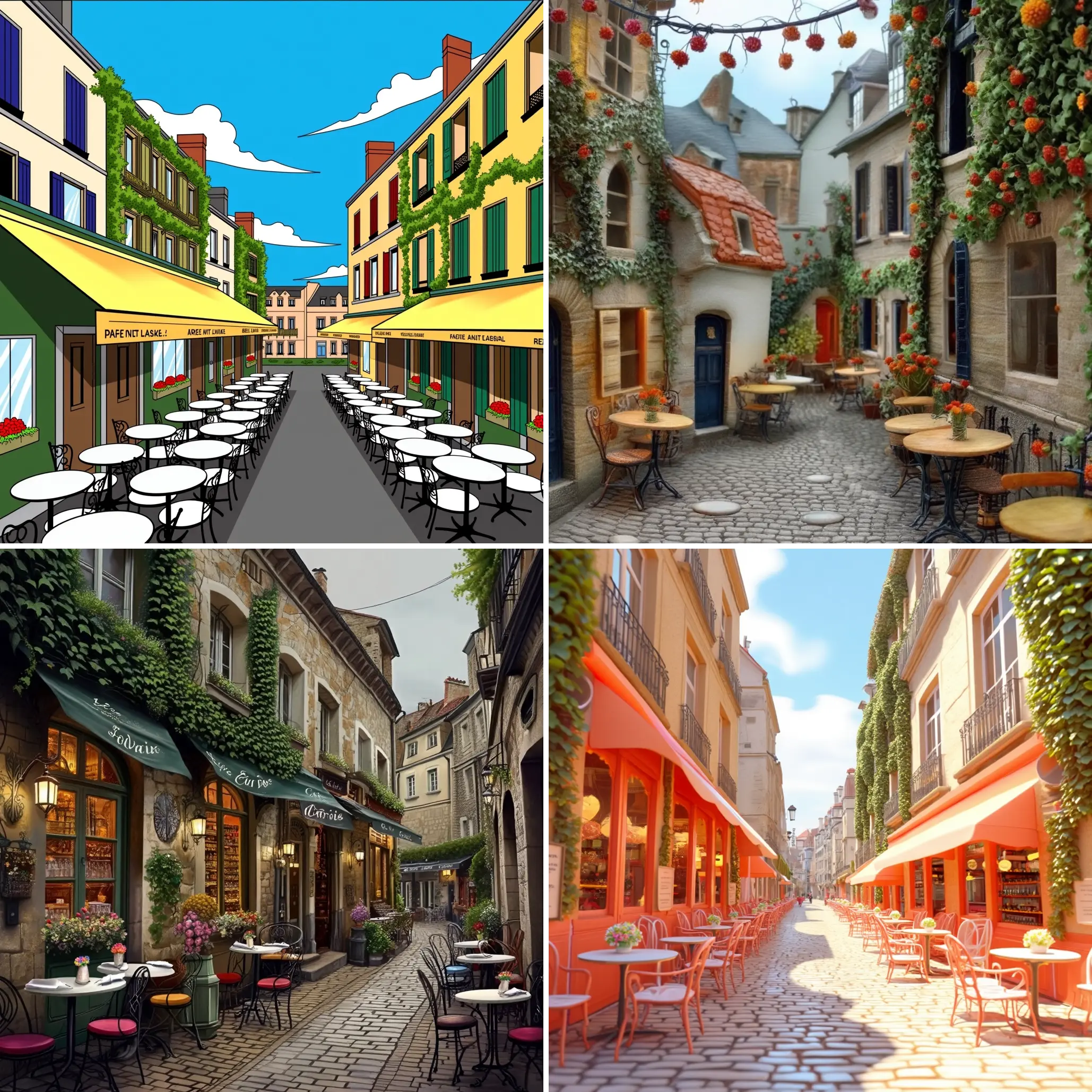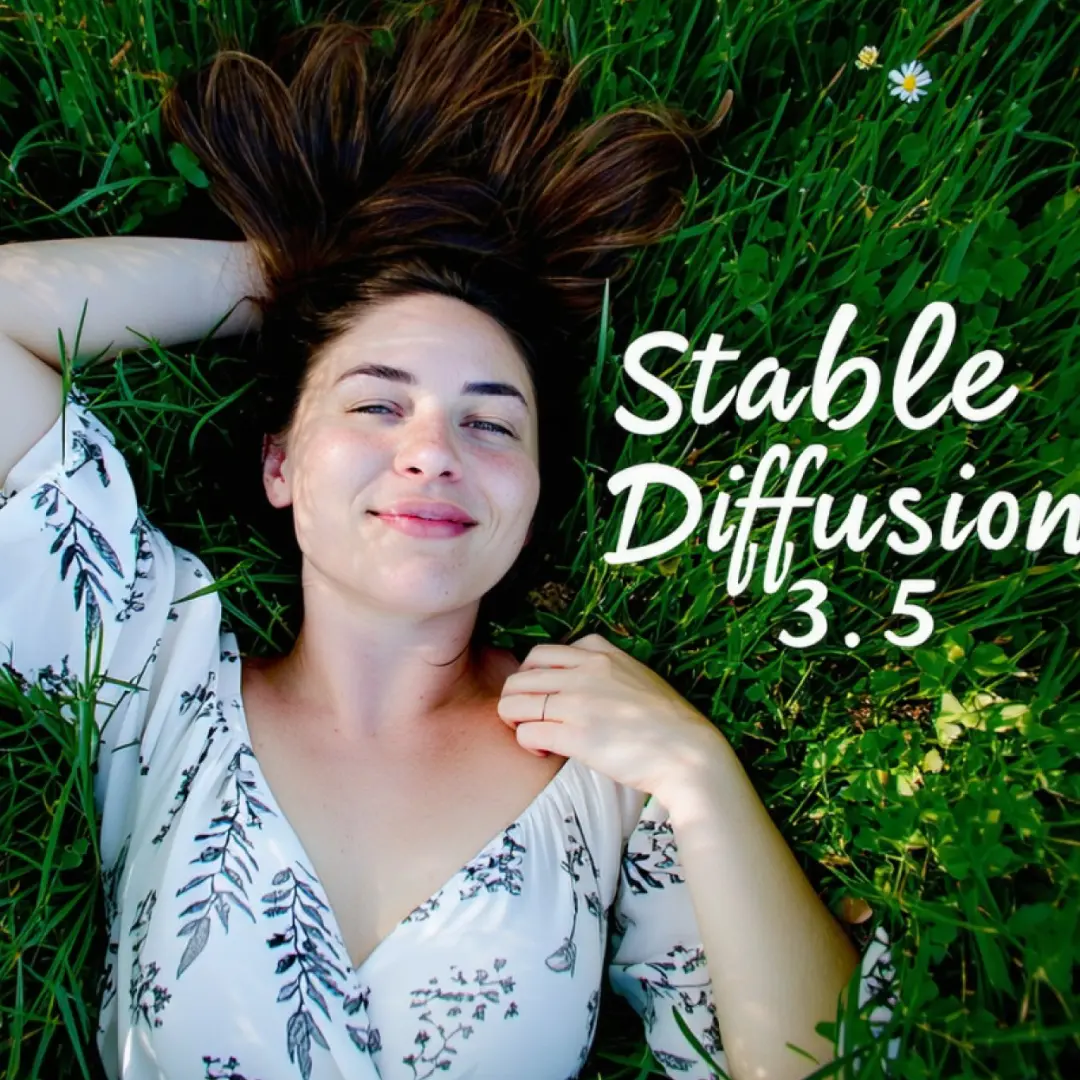ComfyUI Node: LatentPhaseMagnitudePower
LatentPhaseMagnitudePower
CategoryRES4LYF/latents
ClownsharkBatwing (Account age: 314days) Extension
RES4LYF Latest Updated
2025-04-04 Github Stars
0.1K
How to Install RES4LYF
Install this extension via the ComfyUI Manager by searching for RES4LYF- 1. Click the Manager button in the main menu
- 2. Select Custom Nodes Manager button
- 3. Enter RES4LYF in the search bar
Visit ComfyUI Online for ready-to-use ComfyUI environment
- Free trial available
- 16GB VRAM to 80GB VRAM GPU machines
- 400+ preloaded models/nodes
- Freedom to upload custom models/nodes
- 200+ ready-to-run workflows
- 100% private workspace with up to 200GB storage
- Dedicated Support
LatentPhaseMagnitudePower Description
Manipulate latent representations by blending inputs with power functions for visual transformations.
LatentPhaseMagnitudePower:
The LatentPhaseMagnitudePower node is designed to manipulate the phase and magnitude components of latent representations in a sophisticated manner. This node allows you to blend two latent inputs by adjusting their phase and magnitude using power functions, which can significantly alter the visual characteristics of the generated output. By controlling the phase and magnitude, you can achieve a wide range of artistic effects, from subtle adjustments to dramatic transformations. This node is particularly useful for AI artists looking to explore creative possibilities in latent space, offering a powerful tool to fine-tune the balance between different latent features and achieve desired visual outcomes.
LatentPhaseMagnitudePower Input Parameters:
latent_0_batch
This parameter represents the first batch of latent inputs that you want to blend. It serves as one of the primary sources for the phase and magnitude manipulation. The latent data is typically a multi-dimensional array that encodes the features of an image or other data type.
latent_1_batch
This parameter represents the second batch of latent inputs. Similar to latent_0_batch, it provides another set of latent features to be blended with the first batch. The combination of these two inputs allows for a rich interplay of features, enabling complex transformations.
phase_mix_power
This float parameter controls the power applied to the phase blending process. By adjusting this value, you can influence the dominance of phase features from either latent input. The default value is 1.0, with a range from -10000.0 to 10000.0, allowing for both subtle and extreme phase adjustments.
magnitude_mix_power
This float parameter determines the power applied to the magnitude blending process. It functions similarly to phase_mix_power, but affects the magnitude component of the latent inputs. The default value is 1.0, with a range from -10000.0 to 10000.0, providing flexibility in how the magnitude features are combined.
phase_luminosity
This parameter adjusts the luminosity of the phase component. It allows you to brighten or darken the phase features, with a default value of 0.0 and a range from -10000.0 to 10000.0. This can be used to enhance or subdue certain visual elements in the output.
phase_cyan_red
This parameter modifies the cyan-red balance in the phase component. By tweaking this value, you can shift the color balance towards cyan or red, affecting the overall color tone of the phase features. The default is 0.0, with a wide range from -10000.0 to 10000.0.
phase_lime_purple
This parameter adjusts the lime-purple balance in the phase component, similar to phase_cyan_red. It allows for color shifts between lime and purple, influencing the color dynamics of the phase features. The default is 0.0, with a range from -10000.0 to 10000.0.
phase_pattern_structure
This parameter influences the structural patterns within the phase component. By altering this value, you can emphasize or diminish certain patterns, affecting the texture and detail of the phase features. The default is 0.0, with a range from -10000.0 to 10000.0.
magnitude_luminosity
This parameter controls the luminosity of the magnitude component, similar to phase_luminosity. It allows for adjustments in brightness or darkness of the magnitude features, with a default of 0.0 and a range from -10000.0 to 10000.0.
magnitude_cyan_red
This parameter modifies the cyan-red balance in the magnitude component, affecting the color tone of the magnitude features. The default is 0.0, with a range from -10000.0 to 10000.0, allowing for color balance adjustments.
magnitude_lime_purple
This parameter adjusts the lime-purple balance in the magnitude component, similar to magnitude_cyan_red. It influences the color dynamics of the magnitude features, with a default of 0.0 and a range from -10000.0 to 10000.0.
magnitude_pattern_structure
This parameter affects the structural patterns within the magnitude component, similar to phase_pattern_structure. It allows for the enhancement or reduction of patterns, impacting the texture and detail of the magnitude features. The default is 0.0, with a range from -10000.0 to 10000.0.
latent_0_normal
This boolean parameter indicates whether the first latent input should be normalized. Normalization can help in stabilizing the blending process and ensuring consistent results. The default value is True.
latent_1_normal
This boolean parameter indicates whether the second latent input should be normalized. Similar to latent_0_normal, it helps in maintaining stability and consistency during blending. The default value is True.
latent_out_normal
This boolean parameter determines whether the output latent should be normalized. Normalizing the output can ensure that the resulting latent representation is within a desired range, facilitating further processing or visualization. The default value is True.
LatentPhaseMagnitudePower Output Parameters:
mixed_phase_magnitude
The output of this node is a latent representation that has undergone phase and magnitude blending. This output encapsulates the combined features of the input latents, modified according to the specified power and adjustment parameters. The resulting latent can be used for further processing or directly visualized to observe the effects of the blending operation.
LatentPhaseMagnitudePower Usage Tips:
- Experiment with different
phase_mix_powerandmagnitude_mix_powervalues to achieve unique visual effects. Higher values can lead to more pronounced feature dominance from one of the inputs. - Use the color balance parameters (
phase_cyan_red,phase_lime_purple, etc.) to fine-tune the color dynamics of your output, creating harmonious or contrasting color schemes. - Adjust the pattern structure parameters to emphasize or reduce textural details, which can be particularly useful for creating specific artistic styles or effects.
LatentPhaseMagnitudePower Common Errors and Solutions:
"Invalid latent input shape"
- Explanation: This error occurs when the input latent shapes do not match the expected dimensions for processing.
- Solution: Ensure that both
latent_0_batchandlatent_1_batchhave compatible shapes and dimensions before feeding them into the node.
"Normalization error"
- Explanation: This error might arise if the normalization process fails due to incompatible data types or values.
- Solution: Verify that the input latents are correctly formatted and that the normalization parameters (
latent_0_normal,latent_1_normal,latent_out_normal) are set appropriately.
LatentPhaseMagnitudePower Related Nodes
RunComfy is the premier ComfyUI platform, offering ComfyUI online environment and services, along with ComfyUI workflows featuring stunning visuals. RunComfy also provides AI Playground, enabling artists to harness the latest AI tools to create incredible art.




